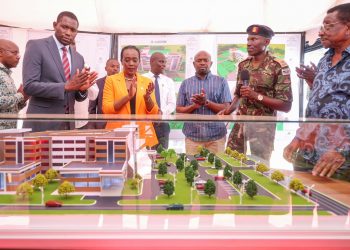In efforts to combat Malaria, Kenya’s Ministry of Health (MoH) conducted Indoor residual spraying (IRS) in Busia County and Seasonal Malaria Chemoprevention (SMC) in Turkana County.
According to Mary Muthoni, Permanent Secretary State Department for Public Health and Professional Standards ,Kenya has intensified interventions such as the distribution of insecticide treated nets (ITNs,)Improved Malaria case management the introduction of targeted prevention strategies,including indoor residual spraying (IRS) and Seasonal Malaria Chemo prevention (SMC).
“In 2014, IRS was successfully conducted in Busia and Migori Counties with support from the United States Government through the Presidential Malaria Initiative (PMI), the campaign targeted high transmission areas , ensuring that 423,037 structures were sprayed out of eligible 444,890 eligible structures,” Muthoni said adding that, “Coverage in Busia county reached 95.1 percent while Migori achieved 95.0 percent surpassing the WHO recommended effectiveness
threshold of 85 percent.”
Muthoni explained that the IRS intervention provided protection to approximately 2 million people with incidence in Busia county declining significantly by 50 percent dropping from 746 cases per 1000 population in 2023 to 358 per 1000 in 2024.
The PS further elaborated on the rationale of deploying Seasonal Malaria Chemoprevention in Turkana County explaining that the county has experienced a transition from a largely seasonal malaria burden to a more stable endemic pattern with some regions still exhibiting seasonal peaks.
“Assessment by the national Malaria Control Program, the County government of Turkana, Moi University, and the Duke University revealed that more than 65 percent increase in Malaria cases happen during the rainy season,” Muthoni sad adding that, “In response, the first phase of Seasonal malaria Chemoprevention (SMC) was implemented in Turkana county, which had recorded 102,000 Malaria cases in 2024, with 60 percent occurring between May and September.”
Muthoni said that the Seasonal malaria Chemoprevention (SMC) was launched in June 2024 with support from Catholic Relief Services (CRS) the SMC targeted 38,585 children under five years to prevent Malaria episodes during the peak periods.
“Over the cycles, each spaced 28 days apart, 71 percent (27,206 children) of the targeted population completed all five doses. The Cycle wise performance was, Cycle 1; 88percent coverage 33,820 children, cycle 2; 101 percent covering 39,229 children, cycle 3; 95 percent covering 36,741 children, Cycle 4; 100 percent covering 38,924 children and cyle 5; 104 percent covering 40,123 children. The SMC intervention reduced malaria by 71 percent.
“Building on this success,” She said, “the second round of SMC in Turkana central is scheduled for June 2025 and will integrate digital campaign approach using the e-CHIS platform.
Data from both the 2024 and 2025 campaigns will guide future expansion and implementation of strategies to enhance the impact of malaria intervention.
Malaria remains a major public health concern in Kenya, with the country reporting approximately 5.5 million cases in 2023, translating to an incidence rate of 104 cases per 1000 population.
The highest burden of Malaria is concentrated of in Six Counties Busia,Kakamega,Kisumu, Siaya,Migori and Vihigap with adjusted Malaria incidence of 748 cases per 1000 people.
Additionally, Kwale, Bungoma , Homabay, Turkana and West Pokot counties recorded an incidence of 474 cases per 1000 people.















